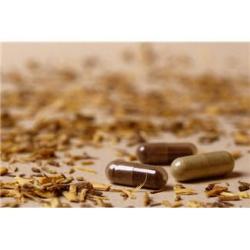Source Institutions
Source Institutions
Add to list Go to activity
Activity link broken? See if it's at the internet archive

In this open-ended multicultural lab activity, learners investigate the effectiveness of herbal remedies. Learners prepare extracts from plants that are used in a variety of herbal medicines; they test the antibiotic effects of the herbs on gram positive and gram negative bacteria, and look for antifungal effects using common molds. The effectiveness of the herbal extracts is compared with traditional antibiotic and antifungal preparations. Each group is in charge of their experimental design; variables include types of herbs chosen, methods of preparing extracts, microbes tested, and type of exposure of microorganisms to the extract (applied to agar surface, on sensitivity disks, in agar itself, heated, cooled, etc.). Adult supervision recommended.
- 45 to 60 minutes
- 1 to 2 hours
- Over $20 per group of students
- Ages 14 - 18
- Activity, Experiment/Lab Activity, Lesson/Lesson Plan
- English
Quick Guide
Materials List (per group of students)
- Collections of common herbs: ginger, garlic, ginseng, aloe, dandelion, goldenseal
- Sterile nutrient agar in petri dishes; other nutrient agar to which herbs may be added
- Gram + bacteria(Staph epidermis, M. luteus, B. cereus) and gram - bacteria (E. coli, Ps. fluorescens )
- Molds (collected from old refrigerator foods) or order Rhizopus, Sordaria
- Alcohol lamps or Bunsen burner
- Forceps
- Inoculating loops
- Petri dishes
- Mortars and pestles for grinding herbs
- Distilled water
- Eyedroppers
- Filter paper
Subjects
-
Engineering and Technology
-
Engineering
- Bioengineering/Biomedical Engineering
-
Engineering
-
Life Sciences
-
Diversity of Life
- Plants
- Viruses and Bacteria
- Protists and Fungi
-
Human Body
- Medicine
-
Diversity of Life
-
The Nature of Science
-
The Scientific Process
- Asking Questions
- Conducting Investigations
- Gathering Data
- Formulating Explanations
- Communicating Results
-
The Scientific Process
Informal Categories
- Food and Cooking
Audience
To use this activity, learners need to:
- see
- see color
- touch
Learning styles supported:
- Links STEM to other topics of interest such as arts and humanities
- Involves hands-on or lab activities
Other
Includes assesments for student learning:
This resource is part of:
Access Rights:
- Free access
By:
- Powers, Cheryl
Rights:
- All rights reserved, Access Excellence @ the National Health Museum, 2009
